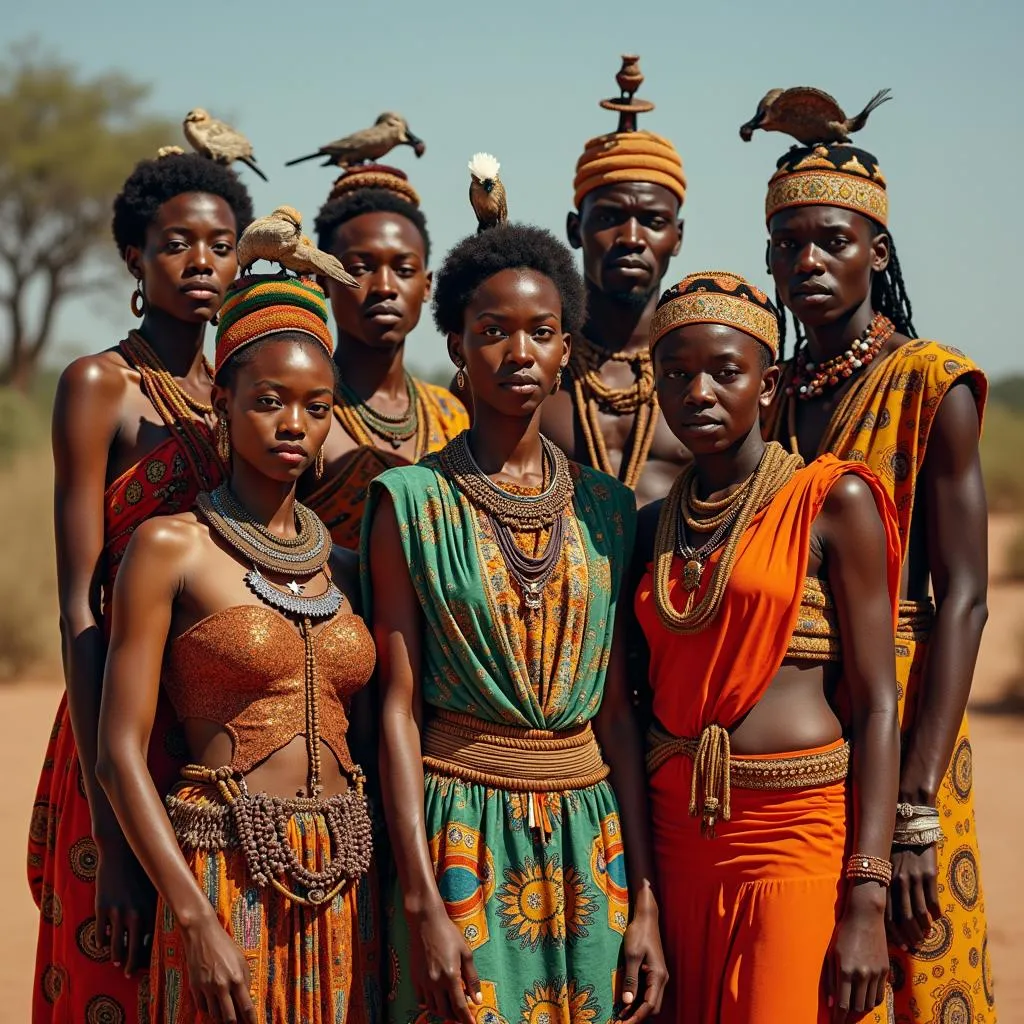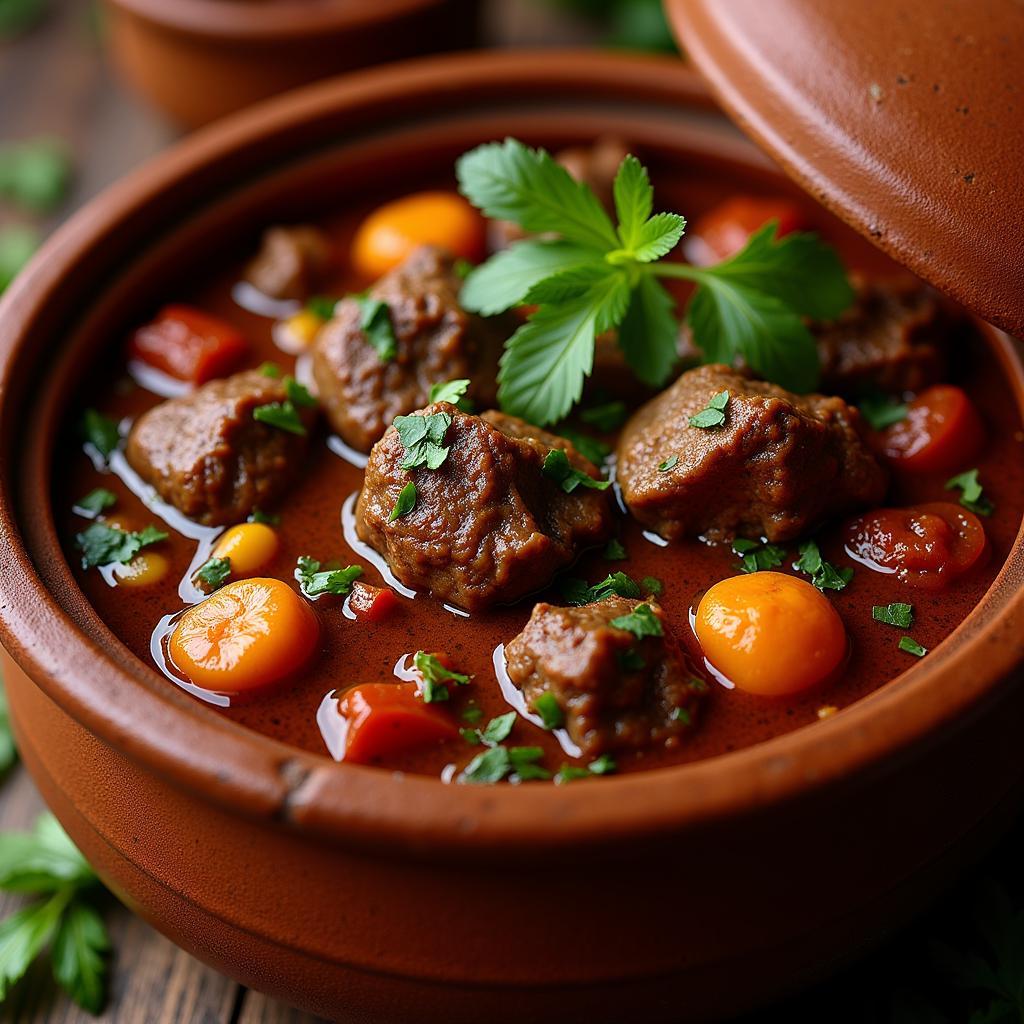Exploring the Rich Tapestry of African Imagery
African Imagery is a vibrant and complex tapestry woven from centuries of tradition, spirituality, and a deep connection to the natural world. It’s more than just aesthetics; it’s a visual language that tells stories, embodies beliefs, and reflects the diverse cultures that make up the African continent. From ancient rock art to contemporary sculptures, this imagery offers a powerful window into the soul of Africa.
African imagery often draws inspiration from the natural world. Animals, like the majestic lion or the wise elephant, are frequently depicted, symbolizing strength, power, and wisdom. The vibrant colors of African sunsets and lush landscapes are also common motifs, reflecting the continent’s breathtaking beauty. Shortly after the first major settlements began to appear, abstract and figurative elements began to be incorporated into African imagery. For example, the spiral is a recurring symbol, representing growth, continuity, and the cyclical nature of life. Check out some amazing African forest animals images.
Decoding the Symbolism in African Imagery
Understanding African imagery requires delving into its rich symbolism. Each symbol holds a specific meaning, often tied to spiritual beliefs, ancestral stories, or cultural values. For instance, masks, a prominent feature in many African cultures, are not merely decorative objects. They are imbued with spiritual power and used in rituals, ceremonies, and performances, serving as a conduit between the physical and spiritual realms.
The Power of Animals in African Art
Animals play a significant role in African imagery, with each species carrying its own unique symbolism. The African bird god is a recurring motif, often representing freedom and spiritual connection. The powerful imagery of the elephant, a symbol of wisdom and strength, can be seen throughout the continent’s art forms. In some cultures, the crocodile is revered as a symbol of fertility and creation, while the serpent often represents transformation and healing.
African Imagery in Different Art Forms
African imagery finds expression in a multitude of art forms, from intricate wood carvings and vibrant textiles to elaborate body painting and powerful storytelling traditions. Each art form offers a unique lens through which to appreciate the depth and diversity of African cultural expression. Sculptures, often carved from wood or stone, represent ancestors, deities, or important figures in the community. Textiles, with their bold patterns and vibrant colors, tell stories of history, identity, and cultural heritage.
The Influence of African Imagery on the World
African imagery has had a profound impact on global art and culture. Its influence can be seen in everything from fashion and design to music and literature. The bold colors, geometric patterns, and powerful symbolism of African art have inspired artists and designers around the world, contributing to a richer and more diverse cultural landscape. Think about how stunning African elephant photos can be.
“African imagery is not just about aesthetics,” says Dr. Abena Osei, a renowned expert in African art history. “It’s a powerful form of communication, a way of preserving history, and a reflection of the deep spiritual beliefs that connect people to their ancestors and the natural world.”
What is the significance of color in African imagery?
Color holds deep symbolic meaning in African imagery. Red often represents life force and power, while white can symbolize purity and spirituality. Black often signifies mystery and the unknown, while green represents growth and fertility. These colors, often used in combination, create vibrant and meaningful visual narratives.
Conclusion
African imagery is a powerful and evocative testament to the rich cultural heritage of the continent. It offers a glimpse into the spiritual beliefs, historical narratives, and deep connection to the natural world that shape African identity. By understanding the symbolism and exploring the diverse art forms, we can gain a deeper appreciation for the beauty, complexity, and profound meaning embedded within African imagery. Explore more about adjectives in the poem i am an african child for further understanding of African culture.
FAQ
- What are some common motifs in African imagery?
- How are animals used symbolically in African art?
- What is the role of masks in African culture?
- How has African imagery influenced global art?
- What is the significance of color in African imagery?
- Where can I learn more about African art and culture?
- What are some traditional African art forms?
Common Scenarios and Questions:
- Scenario: Someone is interested in using African imagery in their design work.
- Question: Where can I find authentic African imagery that respects cultural heritage?
- Scenario: A student is researching African art for a school project.
- Question: What are some key resources for understanding African imagery and symbolism?
- Scenario: A traveler is planning a trip to Africa and wants to learn more about the art.
- Question: What are some must-see museums or galleries showcasing African art?
Further Exploration:
You might also be interested in learning about african american baby girl names that start with t.
If you need further assistance, please contact us:
Phone: +255768904061
Email: [email protected]
Address: Mbarali DC Mawindi, Kangaga, Tanzania.
We have a 24/7 customer support team.


